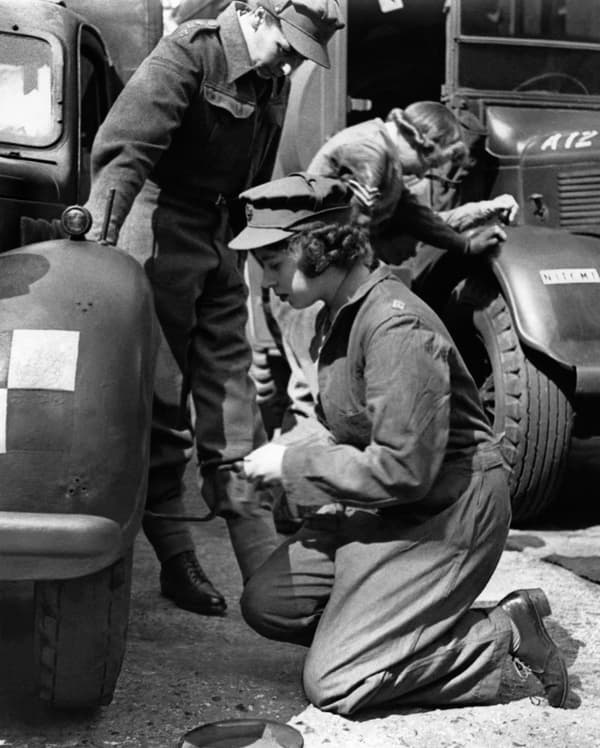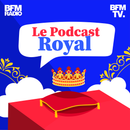He arrived in 1984, 1994, 2000, 2014 and 2019, but he was still only Prince of Wales. This Thursday, June 6, 2024, King Charles will experience as king his first commemorations of the Allied landing in Normandy, alongside Camilla. His son, Prince William, will also be on the trip and will take part in the Canadian D-Day commemorations, organized at the Juno Beach Center in Courseulles-sur-Mer.
On the eve of this trip, the monarch, Queen Camilla and Prince William are also expected in Portsmouth, on the south coast of England, for the national celebrations of the operation. Quite a symbol, when we know the unifying role that the royal family played with the British during World War II.
“We are in war”
On September 3, 1939, the day the United Kingdom entered the war, George VI, father of the future Queen Elizabeth II, addressed a radio message to the British people and the member countries of the British Empire, the future Commonwealth. The task is complex for the “stuttering king”, who was not destined to reign, but had to take back, at the end of 1936, the crown left by his older brother Edward VIII, who left the country for love of the American Wallis Simpson. .
On September 3, the king calls for “the mobilization of bodies but also minds,” recalls historian Philippe Chassaigne, a specialist in the British crown, in the real podcast from BFMTV.
“For the second time in the lives of many of us, we are at war,” he said in the speech, referring to the First World War, in which he himself participated, in the British navy.
Buckingham bombed
Buckingham is hit by German bombs during the Blitz, the bombing campaign carried out by the German air force against the United Kingdom from September 1940 to May 1941. George VI attracts the sympathy of his subjects by remaining in the palace, with his wife Elizabeth, the future “queen mom.”
“The children will not leave without me. I will not abandon the king. And the king will never leave,” responded the future “queen mother” when it was suggested that she leave the country to seek refuge. the official website of the royal family.
It was about “showing that they shared the fate of their subjects,” underlines Philippe Chassaigne. “They didn’t want to appear overprotected.” “Evidently they were, they were still the king and queen,” adds the historian. But the couple spent their days at Buckingham Palace, “although in the evening they returned to Windsor, where Princesses Elizabeth and Margaret were.”
Exchanges between George VI and Churchill
Throughout the war, King George VI was informed through his red boxes. “George VI was a soldier, he had spent his entire career in the navy,” recalls Philippe Chassaigne. “He was informed of all the strategic events determined by Churchill.”
The official website of the British monarchy also recalls an exchange of letters between the Prime Minister and the King. They then both planned to attend the Landing, aboard a Royal Navy ship. “I have come to the conclusion that it would not be good for you or me to be where we planned to be on D-Day,” wrote George VI.
“I know, we should both enjoy being there. But in all seriousness, I ask you to reconsider.”
They both abandon it for safety reasons. The king finally traveled to France on June 16, 1944, ten days after the Landings.
Psychological contribution
For her part, the young Princess Elizabeth also participated in the war effort. In February 1945, she was 18 years old and training as a driver and mechanic. Five months later she obtained the title of honorary junior grand commander.
“He had an essentially psychological contribution, to the point that he joined the territorial reserve army,” analyzes Philippe Chassaigne.
“In fact, he learned to drive, he learned to repair engines. It was a way of showing that he mixed with his contemporaries and participated in passive defense.”

A few months later, on May 8, 1945, when Germany capitulated, Princess Elizabeth joined the crowd to celebrate the Allied victory, along with her sister Margaret, as we can see in an episode of the sixth season of The crown.
“They didn’t go alone, they had security agents,” specifies Philippe Chassaigne. “But they actually mingled with the singing and dancing crowd.” The two princesses stood in front of Buckingham, while the crowd called out to the king. Fiction, at this point, is not so far from reality.
Source: BFM TV


